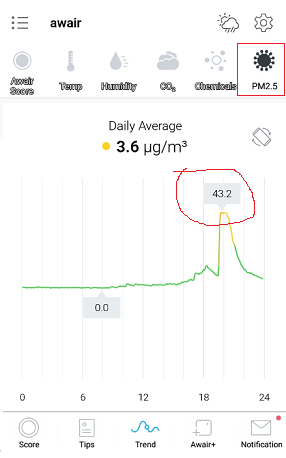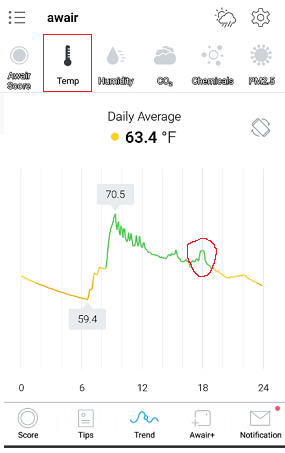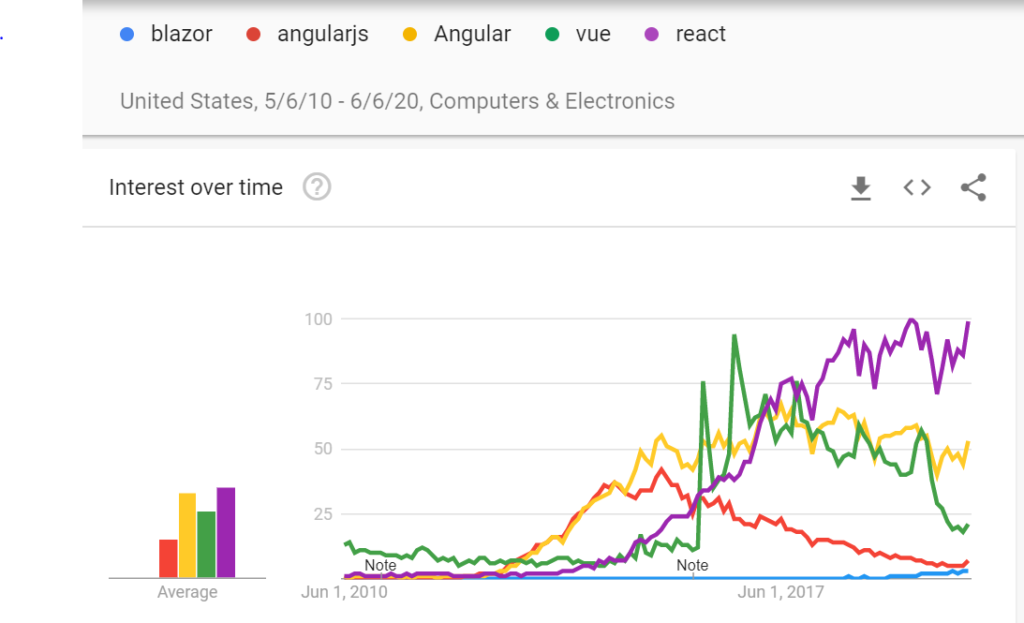In the past few months I have become more curious about the air quality of our house. I noticed as I get older I feel more congested in the winter, and lately our cat has been sneezing more – so I decided to throw technology at the question. In the winter here in the Pacific Northwest, we keep the windows closed most days in winters, and we don’t usually have all the rooms in our house fully heated. In winter months, when I am not heating my office it can dip down to the low 60’s, and with the wet weather we receive, I wonder if we have mildew or other organisms that like damp, cool environments.
So I decided to research air quality trackers, and came across this Awair Air Quality monitor.
I was able to buy it at just over $100, and while it was more than I wanted to spend, but I couldn’t pass up the connected home features this one offers. It comes with a nice app that gives you more than enough information about your home air quality. I set it up in my office where it sits on my desk and I can see the numbers go up and down. I have it set up to give me notifications on my phone when thresholds exceed certain levels. After watching it for several months, the only thing it gives me a low score is typically on is the temperature and humidity. If I don’t have the heat on in my office, the humidity can quickly rise to above 70% on rainy days, which isn’t great. So I have been using this monitor to manage the humidity without grossly heating an empty room.
This does detect chemicals in the air pretty well though. One weekend, I got an alert from my Awair that chemicals in the air were high. I was just sitting in my office, and the numbers were spiking out of nowhere. After thinking about all the stuff I had been doing that day, I realized what was probably causing the issue. Earlier in the day around 2pm, I had painted a closet door in the garage with latex paint, and after I was done I used a utility sink to wash out the brush I was using. I have done this for years, never thinking anything of it. Well it turns out, the furnace is in the same room as the sink, and when the heat kicked on, it must have picked up all the latex compounds that I washed in the sink.
 |
 |
 |
Note that from the above data the number spike corresponds to a heat increase around 4:30pm – when the furnace kicked on. Amazingly just washing paintbrushes was enough to hit an unhealthy level in the house. Since then, the numbers have gone back down to normal and have not spiked since. I have some more painting to do – so I will test this out again just to prove my theory.
I tried moving the Awair to the Kitchen, and it seems pretty accurate detecting smoke from cooking too. Pretty much anytime when cooking, the particulate numbers will elevate, and turning on the kitchen fan does affect the numbers. Interesting the quickest way to get the numbers down is to open doors and windows, which almost immediately flushes the air.
For just over $100, this Awair appliance is interesting, although once you measure your air for a period of time, it doesn’t give you much actionable info. And I am not sure it answers my question about the mildew or mold in the air, but it does tell me I have no major problems. For now though, my indoor air quality is for the most part excellent and so I can rest (and breath) easy.

